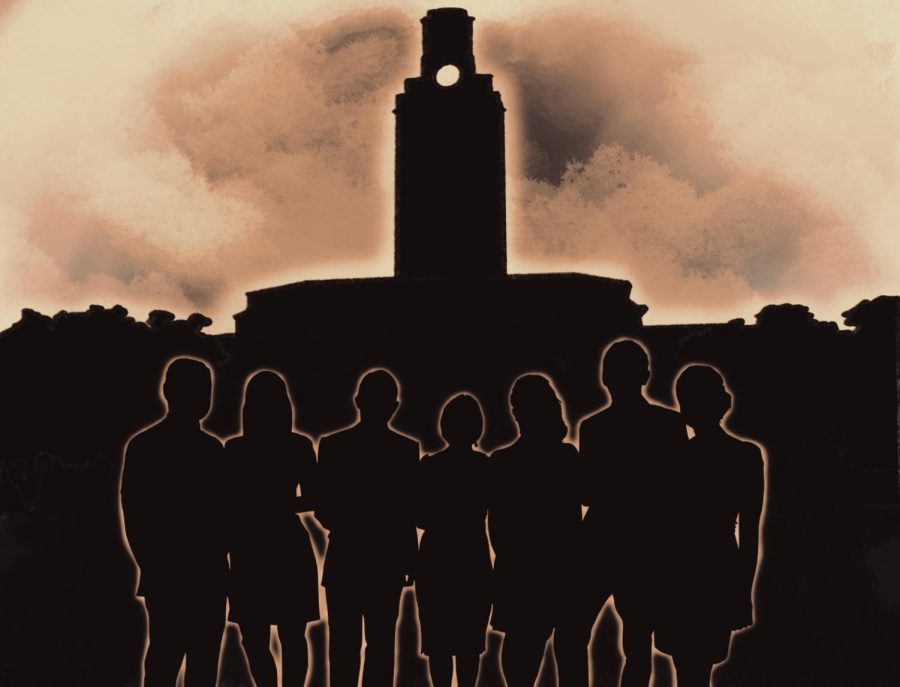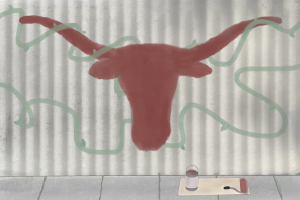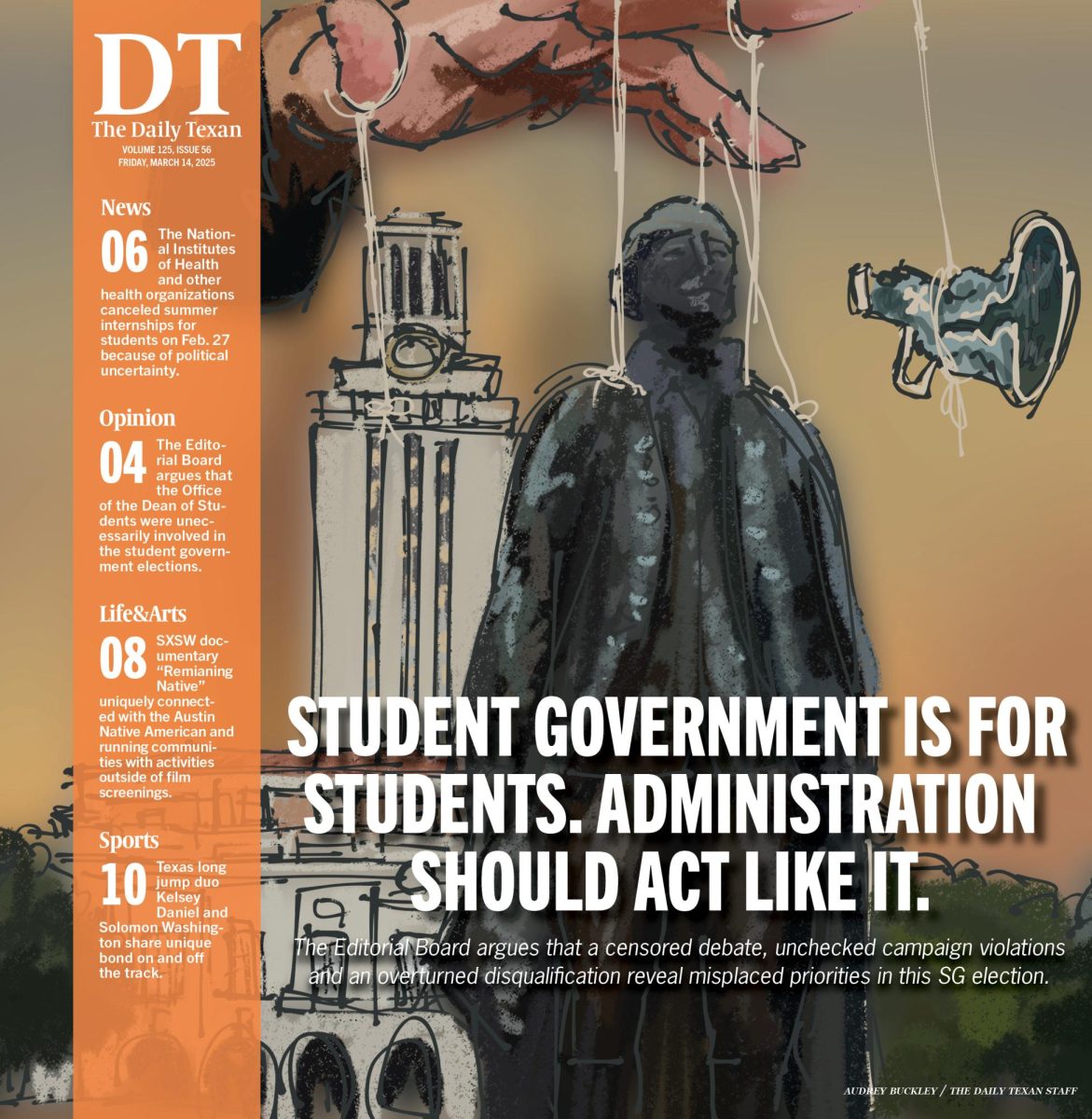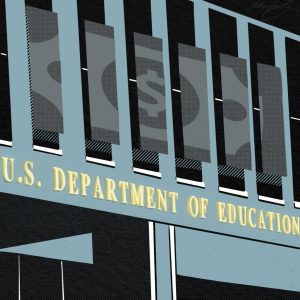UT should highlight students of color on campus
April 18, 2023
“History repeats itself if you don’t learn from it. Texas is talking about getting rid of (DEI initiatives at the) University, because they feel like we are in a new day and age where none of that is going on anymore,” said Anthony Williams, marketing senior and President of the Heman Sweatt Center for Black males. “Black history is everyone’s history.”
To fully understand and reckon with UT’s past, we must examine its connections to our future.
Permanent exhibits and visual reminders on campus will allow us to further understand the racism present in our school’s past and its existence today – despite the strides to eradicate it.
At the start of Black History Month, UT’s Contextualization and Commemoration Initiative erected a memorial honoring the Precursors. The Precursors were among the first Black students that attended UT. While such exhibits educate the University community on underlying racial tensions, their temporary status limits their efficacy.
Prior to UT admitting Black students, the only options for schooling for African-American students in Texas were Historically Black Colleges and Universities (HBCUs). August 1st, 1950, marks the day the first Black Longhorns – Heman Sweatt and George Washington, Jr. – began their UT graduate schooling.
Undergraduate programs only opened their doors to Black students in the fall of 1956. Still, Black students remained discouraged to attend UT because of its environment. Limited opportunities to socialize with peers due to segregation and an unaccommodating culture created many inequities in Black students’ experiences.
In May 1956, UT’s Inter-Co-op council voted to desegregate the school’s dorms. But a majority of the student hubs on the Drag only catered to white populations. After a slew of protests and sit-ins, the NightHawk – a burger joint along Guadalupe at the time – made history as the first Austin establishment to welcome Black patrons in 1959.
Though many organizations like Texas Athletics had already enforced integration by 1965, the UT football team did not recruit its first Black athlete until 1970.
It’s easy to look around campus and forget the long road to diversity that the university is still walking down. Currently, only 5.2% of UT’s population is Black. The history of segregation at UT is not as distant as one may think.
Economics freshman Temi Idowu explained she feels compelled to avoid certain subjects in the classroom and is very cognizant of the majority-white students around her.
“I make sure to avoid certain topics,” Idowu said. “I don’t really like talking about jail, single motherhood or mass incarceration, things like that. Because I know (what’ll happen) if I talk about that.”
Black students and organizations can also face discrimination from non-Black peers through microaggressions.
“You don’t have to only do it during our months,” Williams said. “I’ve been on this board for three years, and I will say our organization has received the most donations in UT history, but I have not met the president once.”
Historical exhibits reminding students of UT’s racial history should be permanently displayed in frequently-visited student spaces. While the Contextualization and Commemoration Initiative has implemented a more permanent historical reminder – the Sweatt v. Painter Commemorative Gallery Space – this exhibit is not one many students will see, as not everyone has classes in this specific building.
“All types of companies (like UT) give us a month, just to make it seem like they care, but then after that month, like literally the next day, it’s like it never happened,” Williams said. “We just go back to business as usual.”
Making our history permanent and accessible to all students will increase acceptance of how UT’s history intertwines with Black students.
“If they (put up permanent displays) it will pull in more awareness and even more eyes for people to come and check out UT… showing that UT really has our backs and they really support us in that way,” Williams said.
Hosseini is an international relations freshman from Sugar Land, Texas. Muthukrishnan is a government and race, indigeneity and migration freshman from Los Gatos, California.
















